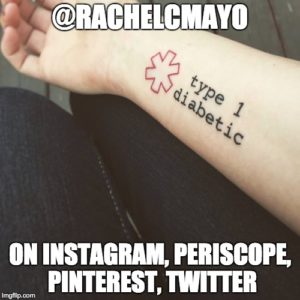
Hemoglobin A1C
This test measures the percentage of your hemoglobin (the protein in your red blood cells that carry oxygen) has been coated in glucose. When there’s a lot of extra sugar floating around, it tends to stick to the other things floating around with it. Red blood cells live for 120 days*, so that’s a lot of time to let sugar hitch a ride. And while a blood glucose measurement gives a snapshot of what the blood sugar level is right now, the A1c measurements gives us an idea of what the blood sugar level has been during all the times you’re not pricking your finger to measure over the last 3 months*.
*I do realize that 120 days equals 4 months and not 3 months, but the really old and decrepit RBC’s that are close to their expiration are exactly that – decrepit, so they’re not in good enough shape to give us a trustworthy measurement.
Goal
For those with diabetes, the goal is to have an A1c >7%. For the average non-diabetic, A1c is ~ 5% (though with the American lifestyle, that “normal” number is creeping up – but that has more to do with Type 2 Diabetes).
Rachel received lots of support through the people she met through the Juvenile Diabetes Research Foundation (JDRF) and continues to support their cause and actively helps other T1D’s get connected. She also participates in her local chapter of JDRF and participates in the Annual One Walk in Nashville (that’s where I got to hang out with Rachel for this interview!) You can find out what JDRF is all about by visiting JDRF.org and walk.JDRF.com.
++Time Sensitive ++ —> Follow Rachel on social media during the month of November to catch her Diabetes education Periscopes.

Connect with me
Support us on Patreon
*NEW* Join the Pharmacist Answers Podcast Community on Facebook
Subscribe: iTunes, Stitcher, GooglePlay, TuneIn Radio
Music Credits: “Radio Martini” Kevin MacLeod (incompetech.com) Licensed under Creative Commons: By Attribution 3.0 http://creativecommons.org/licenses/by/3.0/
